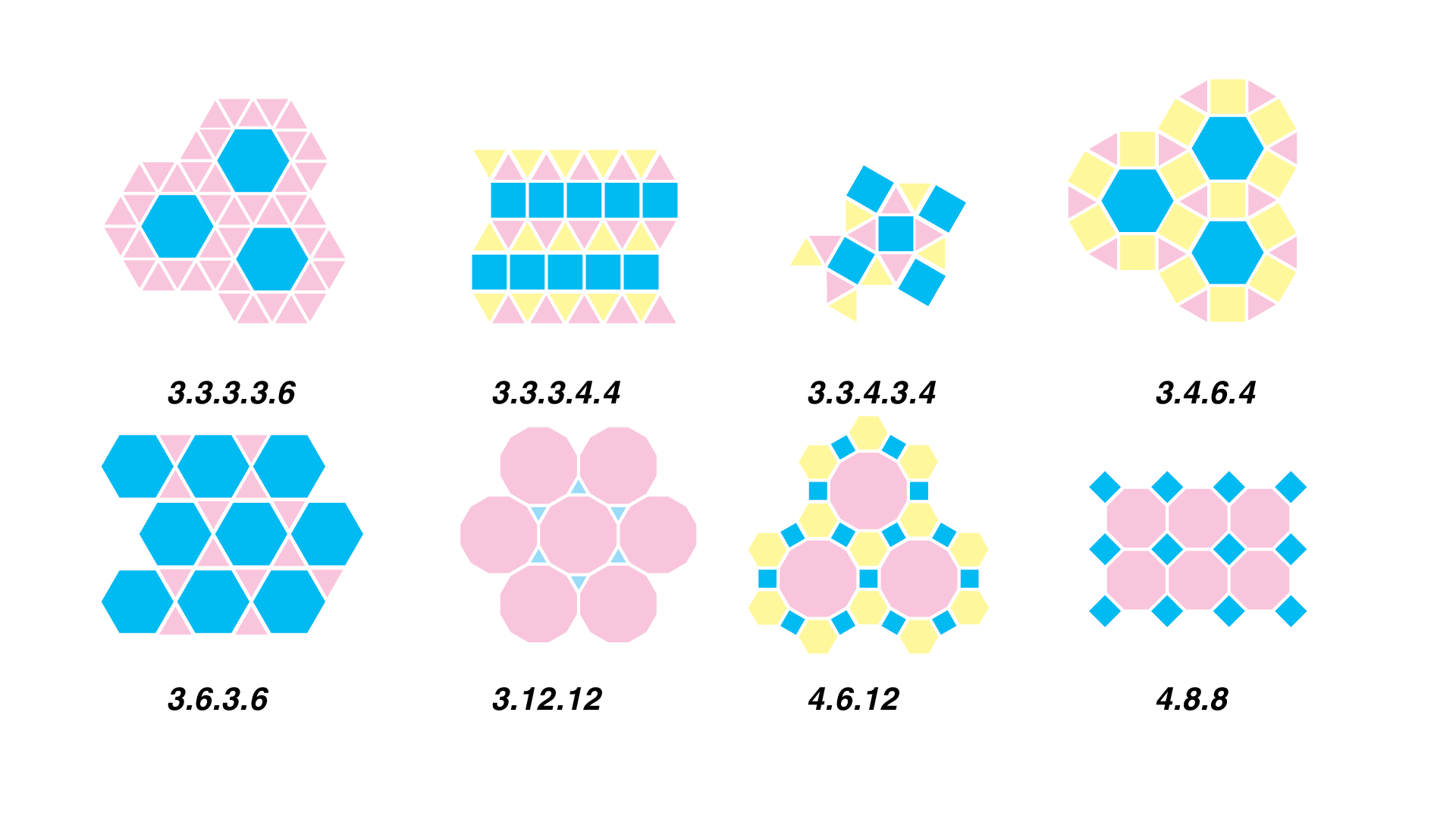


Tessellations figure prominently throughout art and architecture from various time periods throughout history, from the intricate mosaics of Ancient Rome, to the contemporary designs of M.C. As you can probably guess, there are an infinite number of figures that form irregular tessellations! A semi-regular tessellation is a tessellation that is composed of two or more regular polygons such that the arrangement of the. Meanwhile, irregular tessellations consist of figures that aren't composed of regular polygons that interlock without gaps or overlaps.Only eight combinations of regular polygons create semi-regular tessellations. Semi-regular tessellations are made from multiple regular polygons. A semi-regular tessellation is a tessellation, or tiling, of the plane that uses two or more regular polygons, where a regular polygon is a polygon in which all of the sides have equal.Regular tessellations are composed of identically sized and shaped regular polygons. A semi-regular tessellation is a tessellation in which some of the tiles are the same shape, but are arranged in different ways.There are three different types of tessellations ( source): but only if you view the triangular gaps between the circles as shapes. While they can't tessellate on their own, they can be part of a tessellation. Circles can only tile the plane if the inward curves balance the outward curves, filling in all the gaps. What about circles? Circles are a type of oval-a convex, curved shape with no corners. Only three regular polygons(shapes with all sides and angles equal) can form a tessellation by themselves- triangles, squares, and hexagons. In a tessellation, whenever two or more polygons meet at a point (or vertex), the internal angles must add up to 360°. While any polygon (a two-dimensional shape with any number of straight sides) can be part of a tessellation, not every polygon can tessellate by themselves! Furthermore, just because two individual polygons have the same number of sides does not mean they can both tessellate. Additionally, a tessellation can't radiate outward from a unique point, nor can it extend outward from a special line. and even in paper towels!īecause tessellations repeat forever in all directions, the pattern can't have unique points or lines that occur only once, or look different from all other points or lines. You can find tessellations of all kinds in everyday things-your bathroom tile, wallpaper, clothing, upholstery. anything goes as long as the pattern radiates in all directions with no gaps or overlaps. They can be composed of one or more shapes. The most famous pair of such tiles are the dart and the kite.Ĭlick here for the lesson plan of non-periodic Tessellations.This month, we're celebrating math in all its beauty, and we couldn't think of a better topic to start than tessellations! A tessellation is a special type of tiling (a pattern of geometric shapes that fill a two-dimensional space with no gaps and no overlaps) that repeats forever in all directions. The pattern of shapes still goes infinitely in all directions, but the design never looks exactly the same. In the 1970s, the British mathematician and physicist Roger Penrose discovered non-periodic tessellations.

Whatever direction you go, they will look the same everywhere. They consist of one pattern that is repeated again and again. It may be better to show a counter-example here to explain the monohedral tessellations.Īll the tessellations mentioned up to this point are Periodic tessellations. All regular tessellations are also monohedral. A tessellation is a pattern of a shape or shapes in geometry that repeat. If you use only congruent shapes to make a tessellation, then it is called Monohedral Tessellation no matter the shape is. Semi-regular Tessellation: Definition & Examples Tessellations. You can use Polypad to have a closer look to these 15 irregular pentagons and create tessellations with them. Among the irregular pentagons, it is proven that only 15 of them can tesselate. We can use any polygon, any shape, or any figure like the famous artist and mathematician Escher to create Irregular tessellationsĪmong the irregular polygons, we know that all triangle and quadrilateral types can tessellate. The good news is, we do not need to use regular polygons all the time. If one is allowed to use more than one type of regular polygons to create a tiling, then it is called semi-regular tessellation.Ĭlick here for the lesson plan of Semi - Regular Tessellations. If you try regular polygons, you ll see that only equilateral triangles, squares, and regular hexagons can create regular tessellations.Ĭlick here for the lesson plan of Regular Tessellations. the most well-known ones are regular tessellations which made up of only one regular polygon. There are several types of tessellations.


 0 kommentar(er)
0 kommentar(er)
